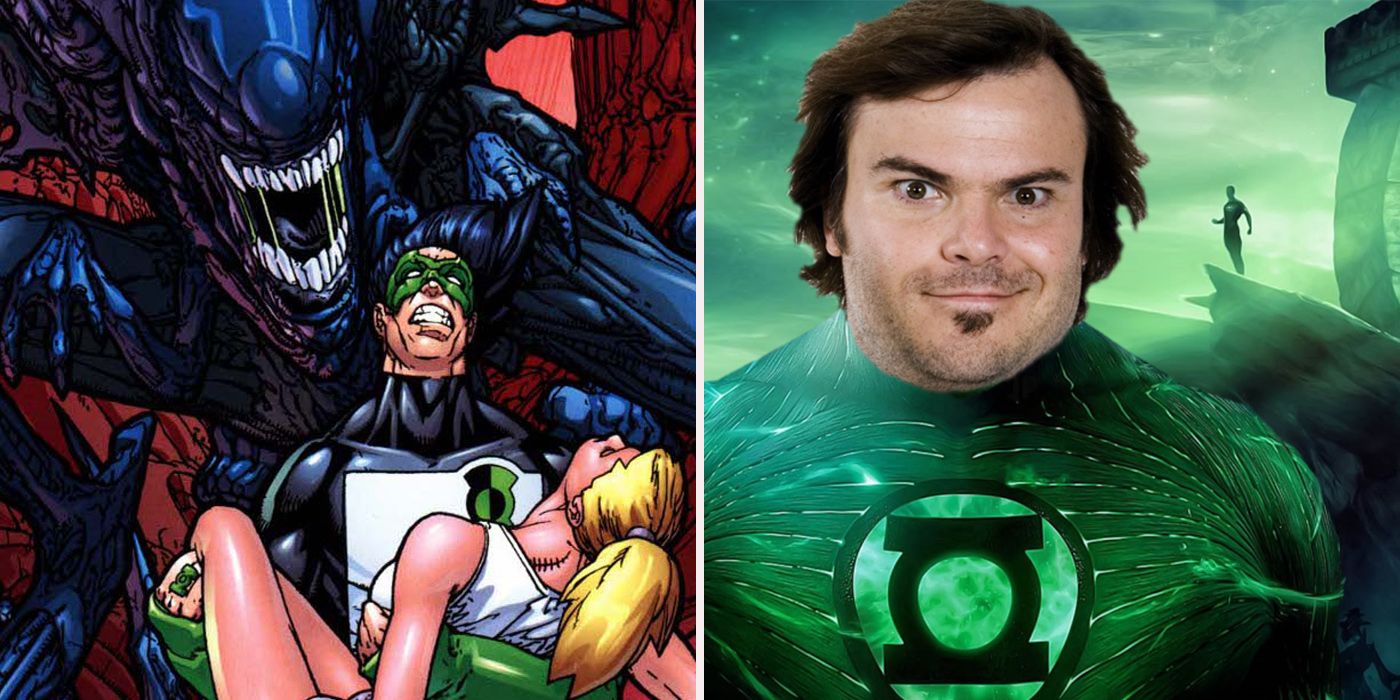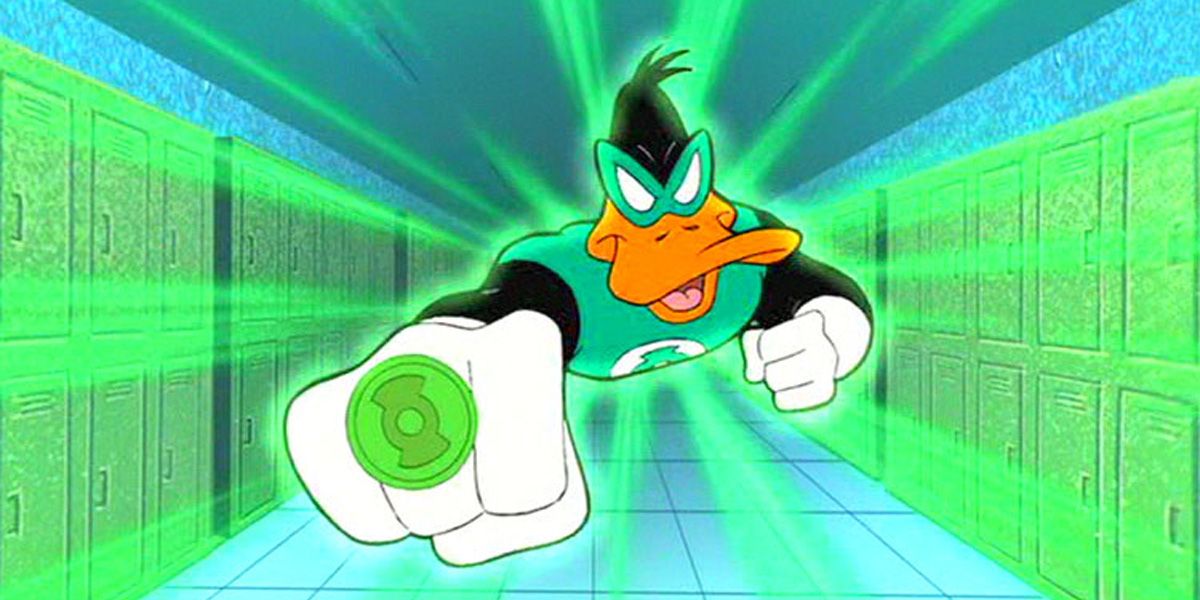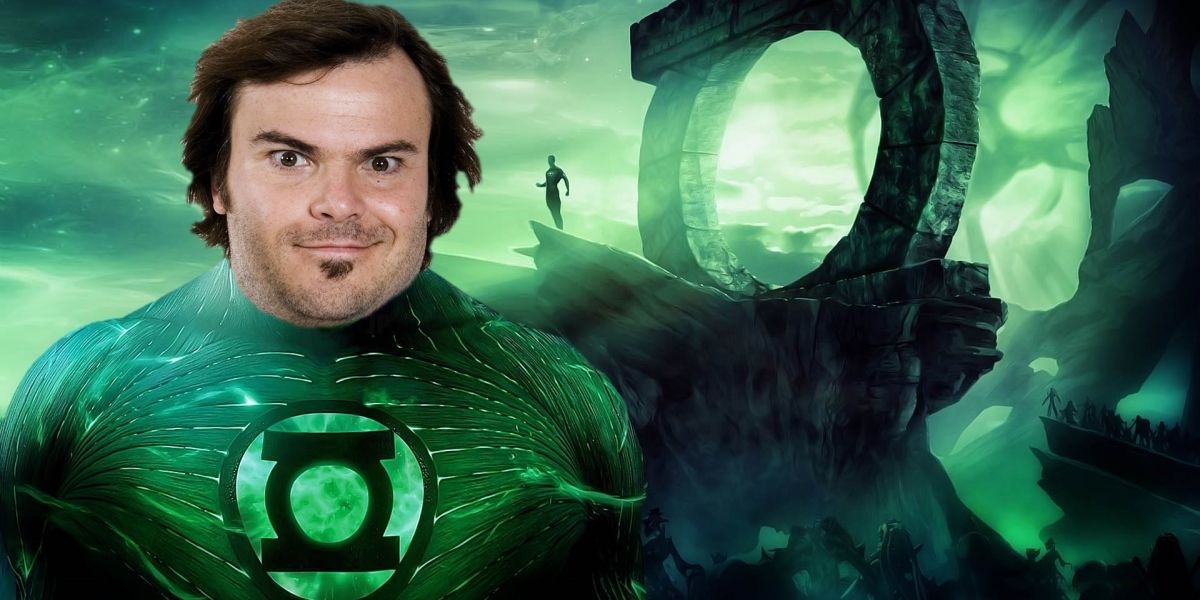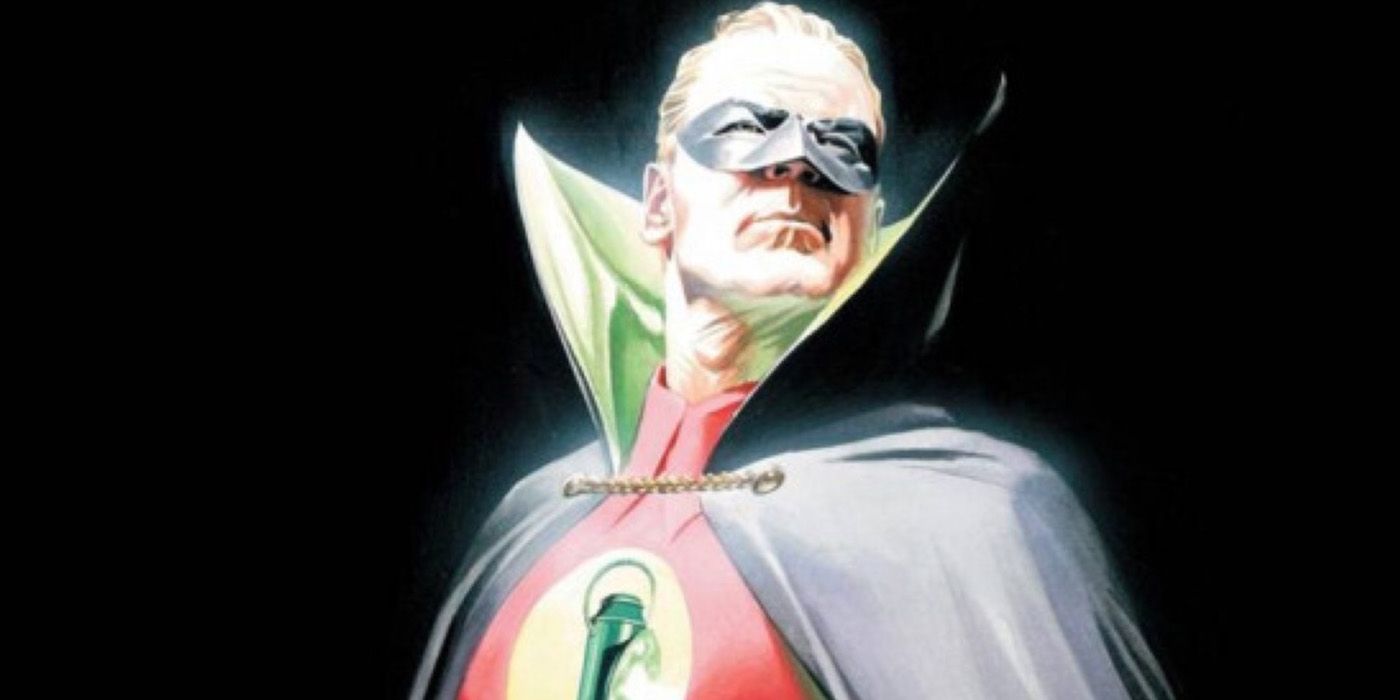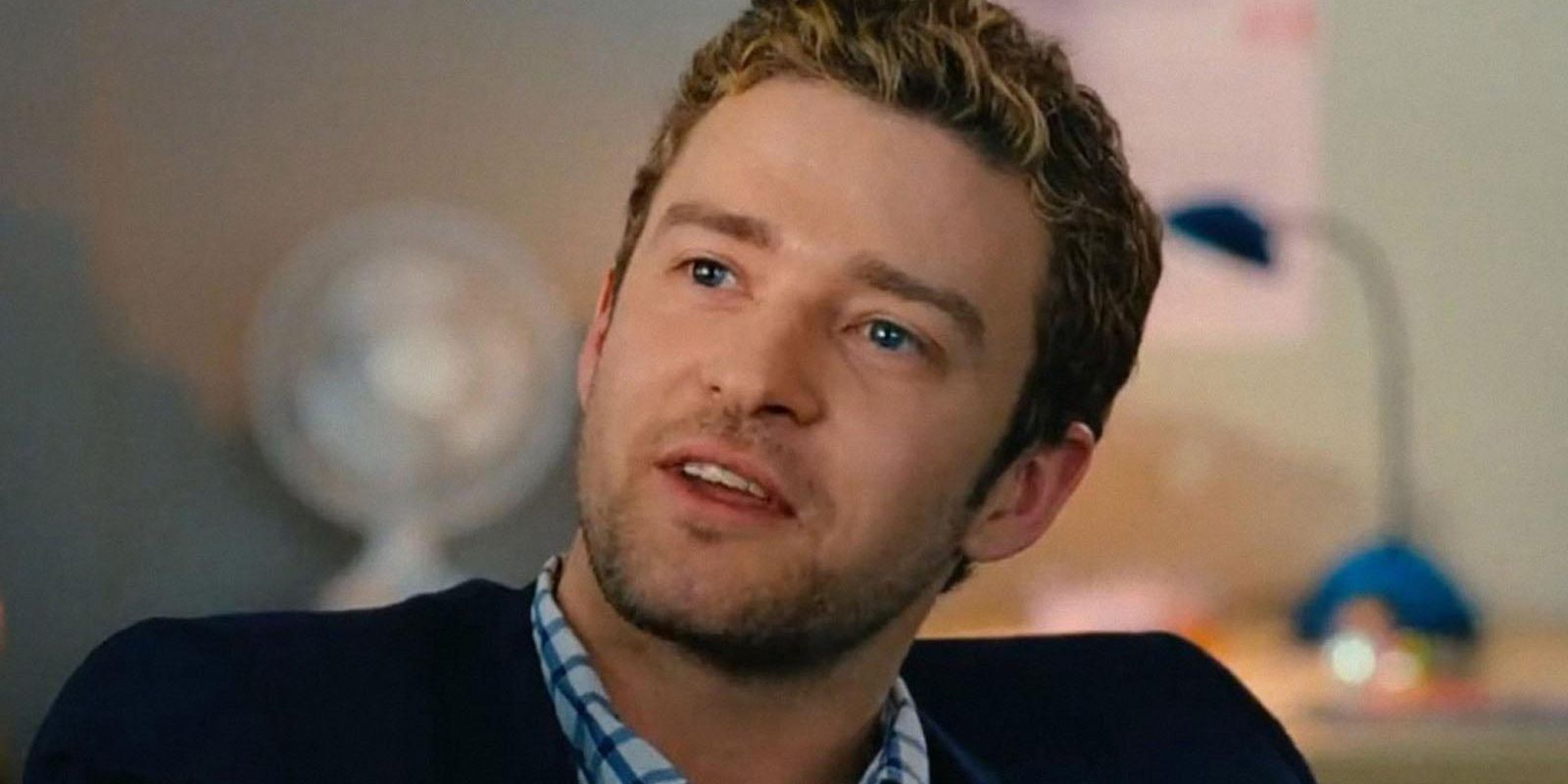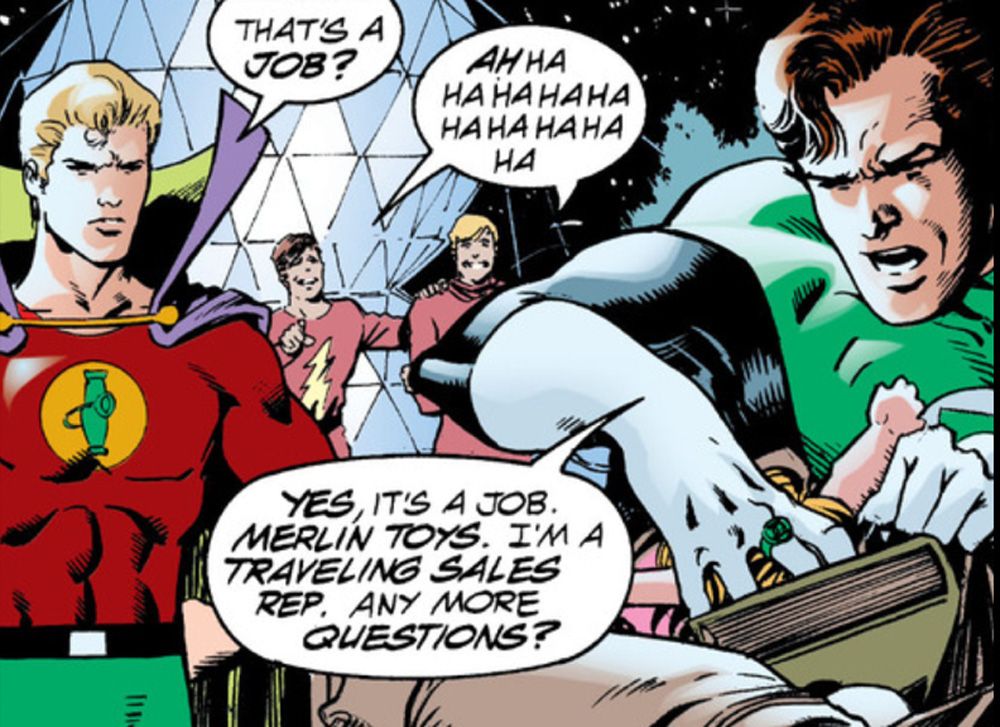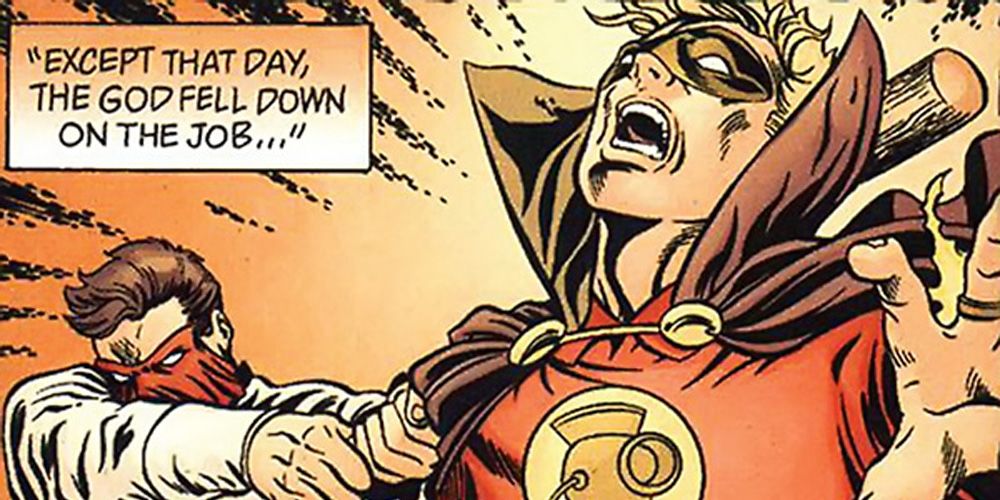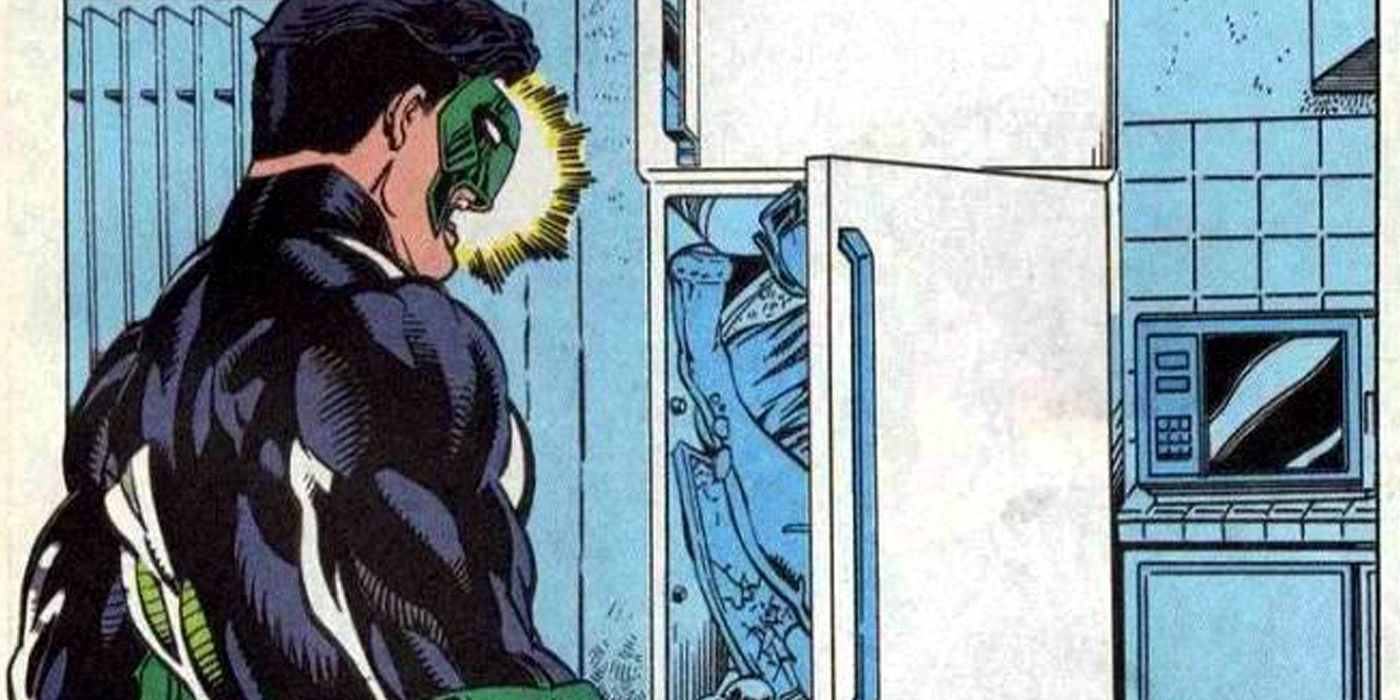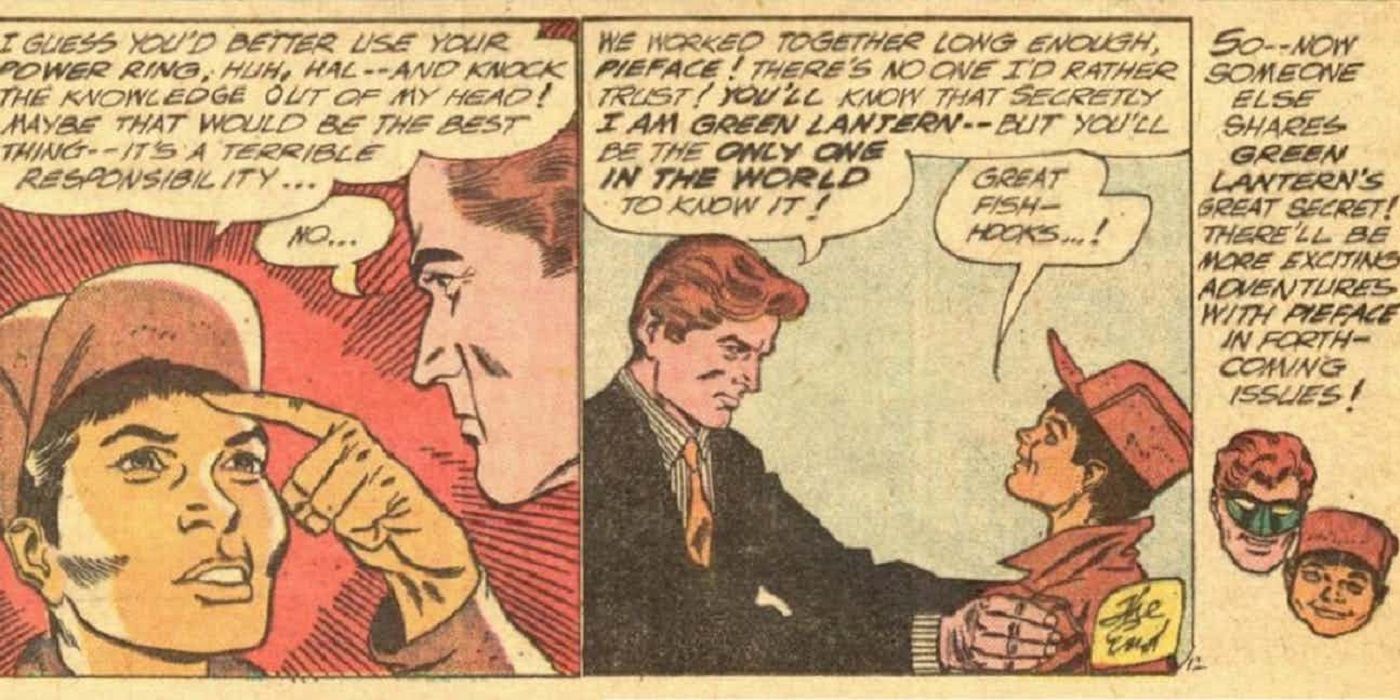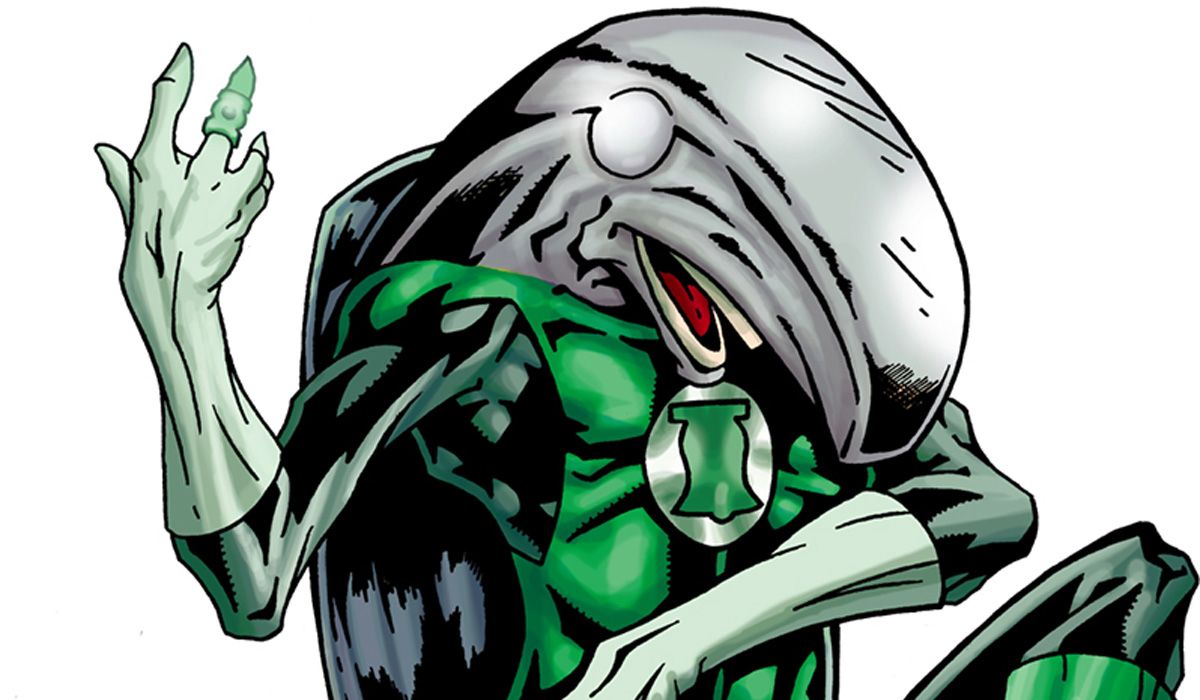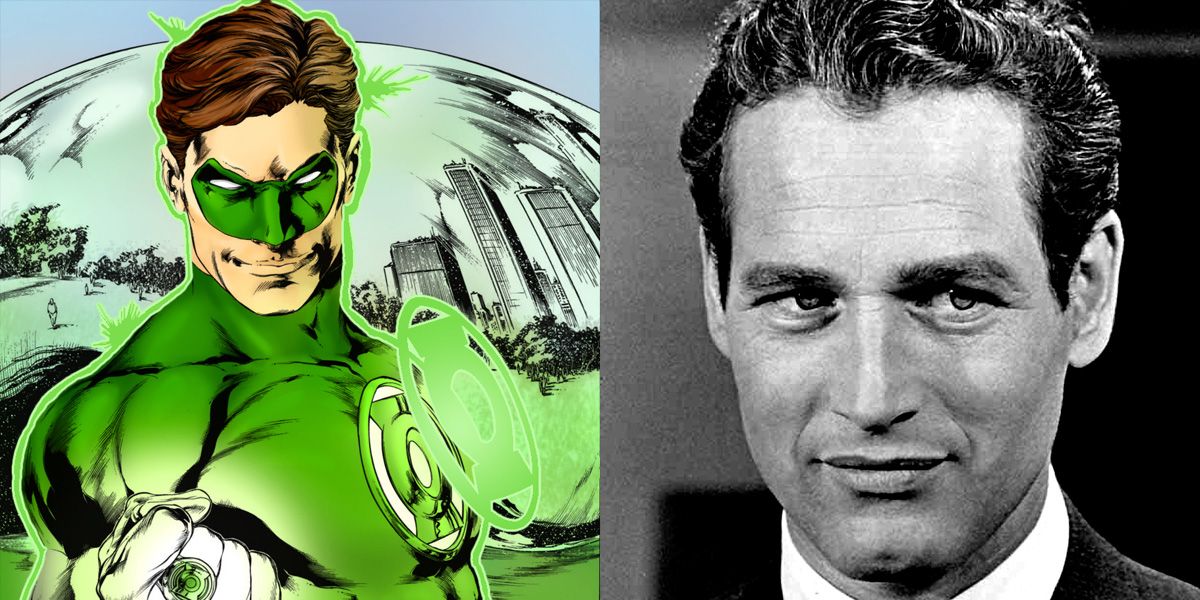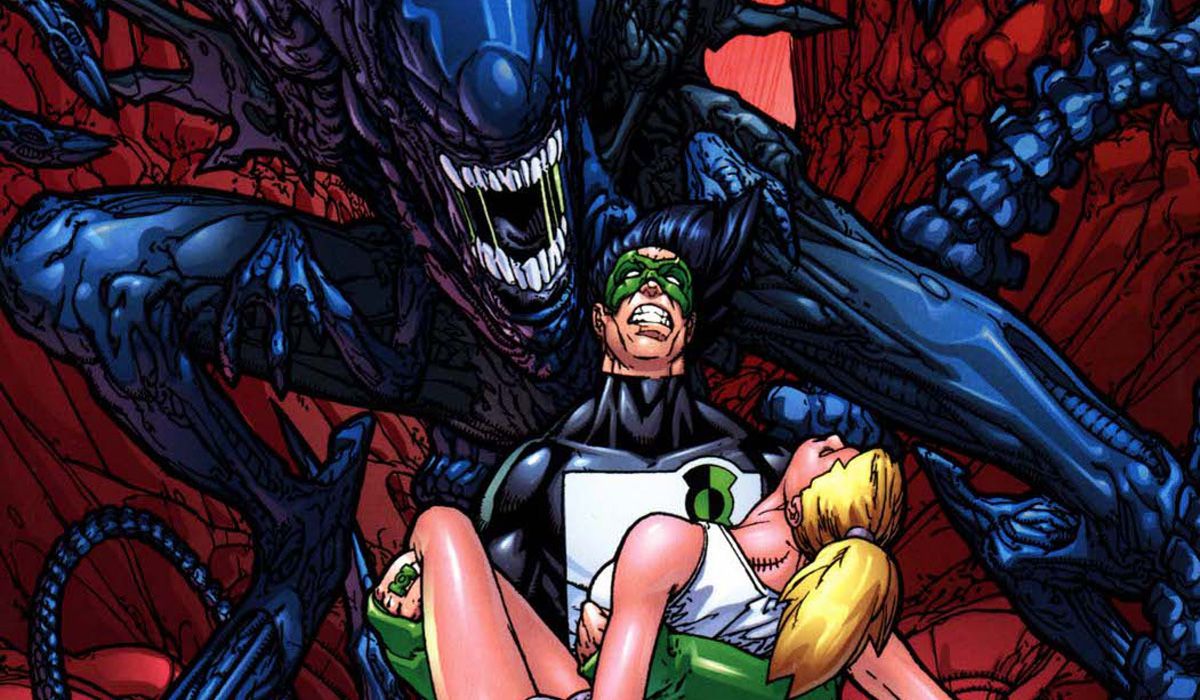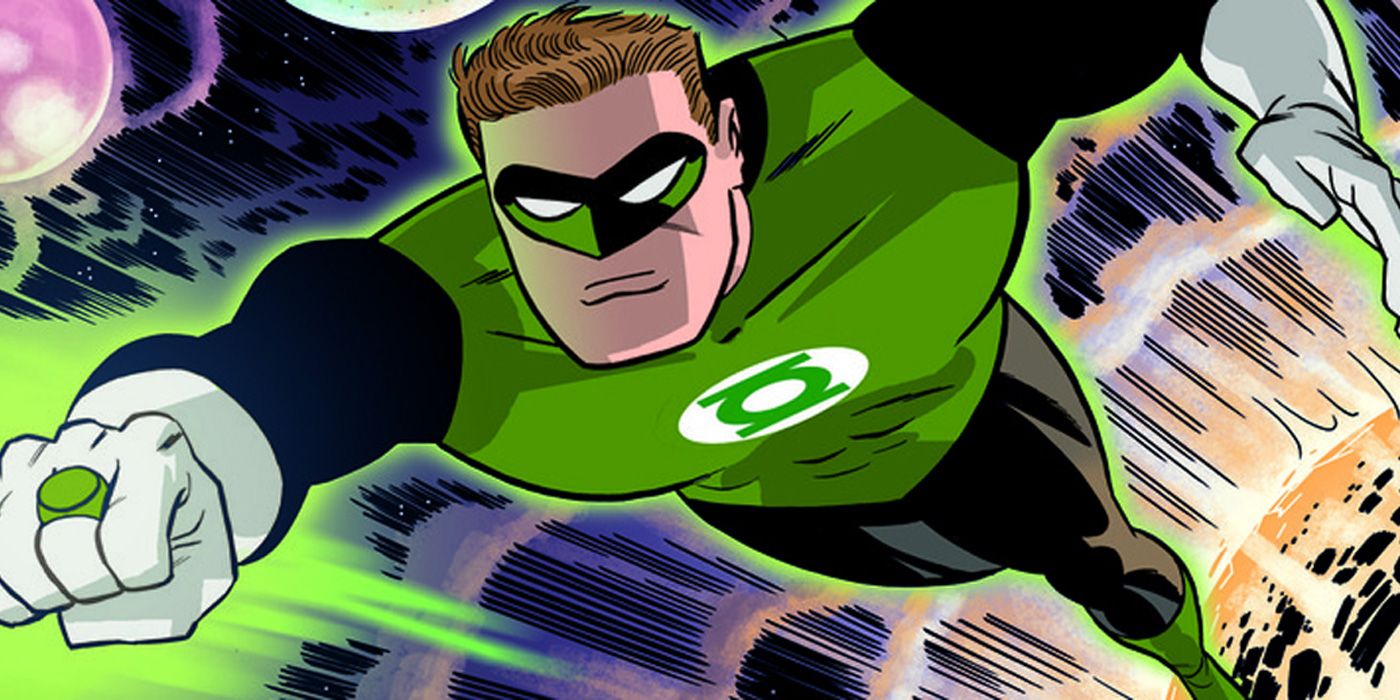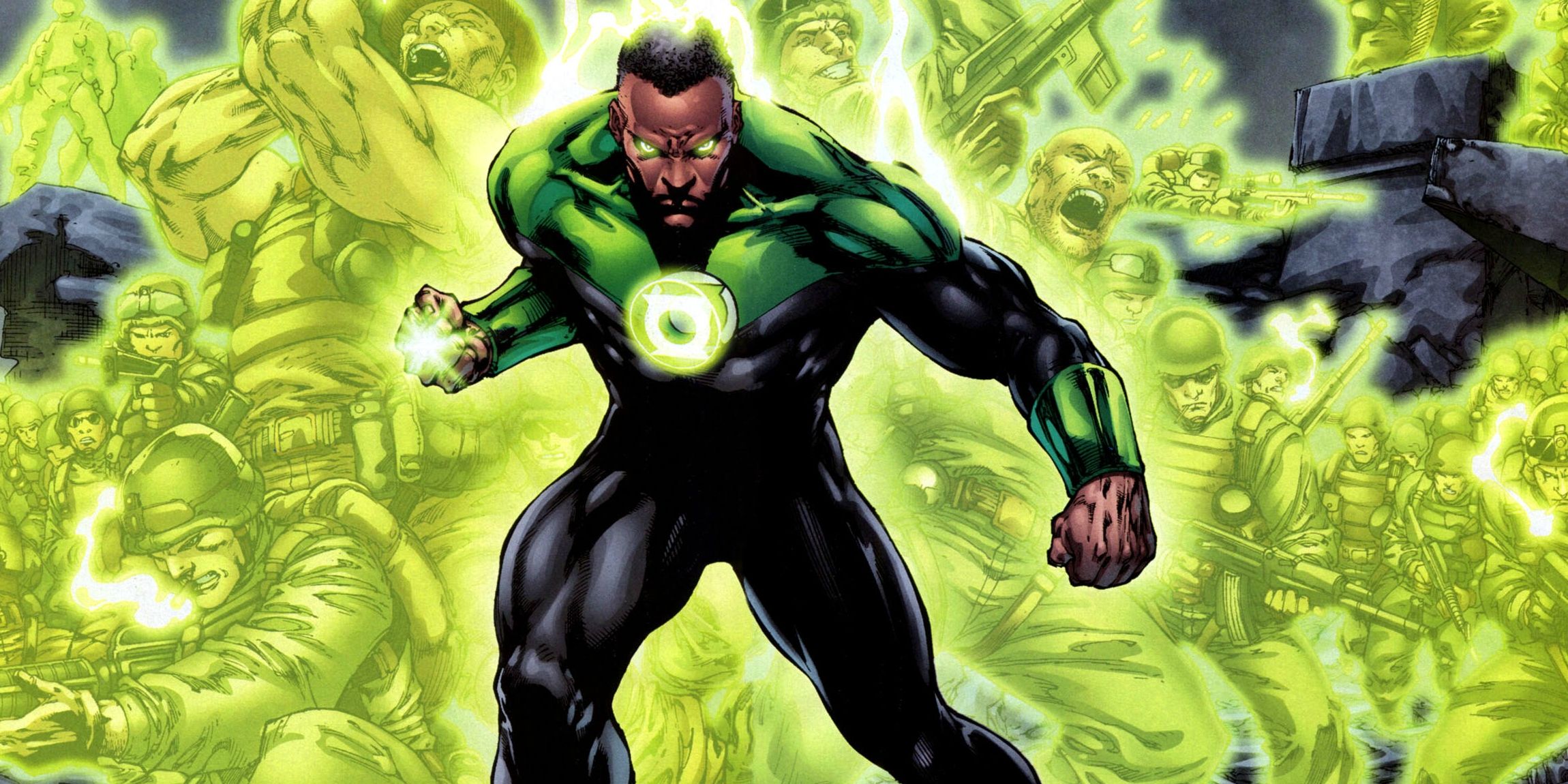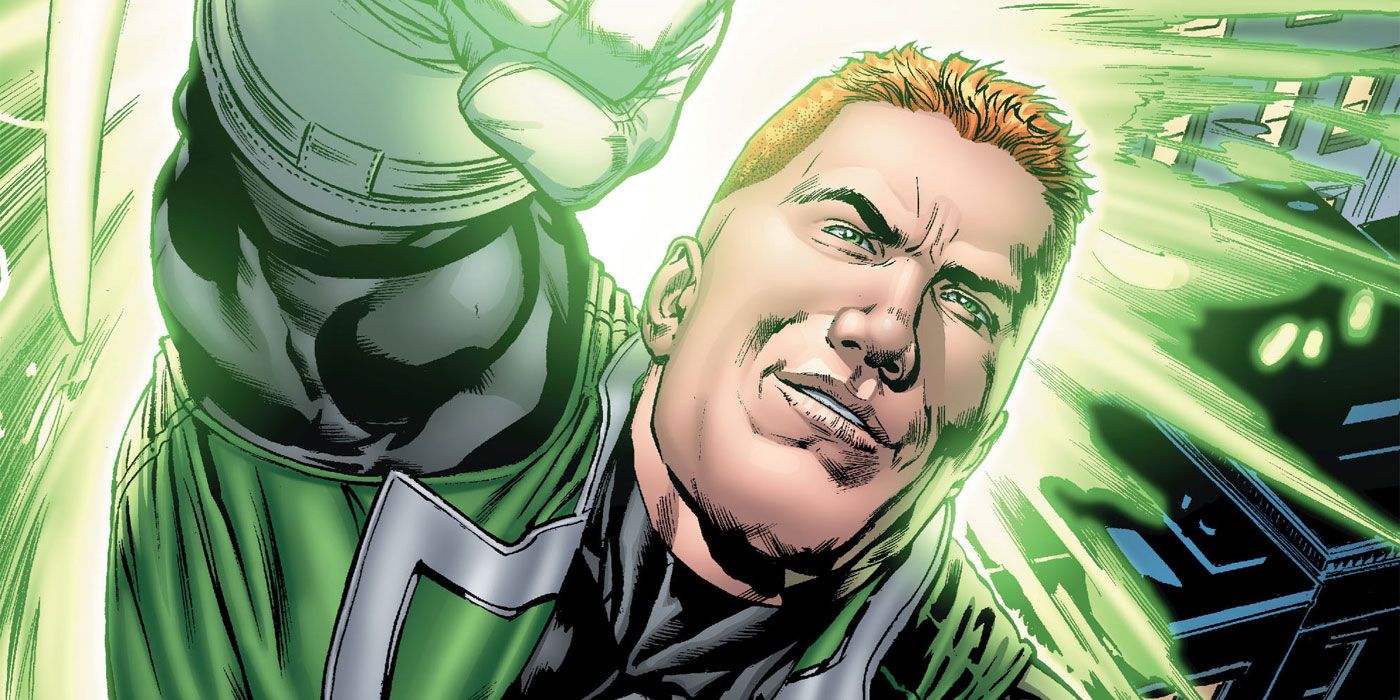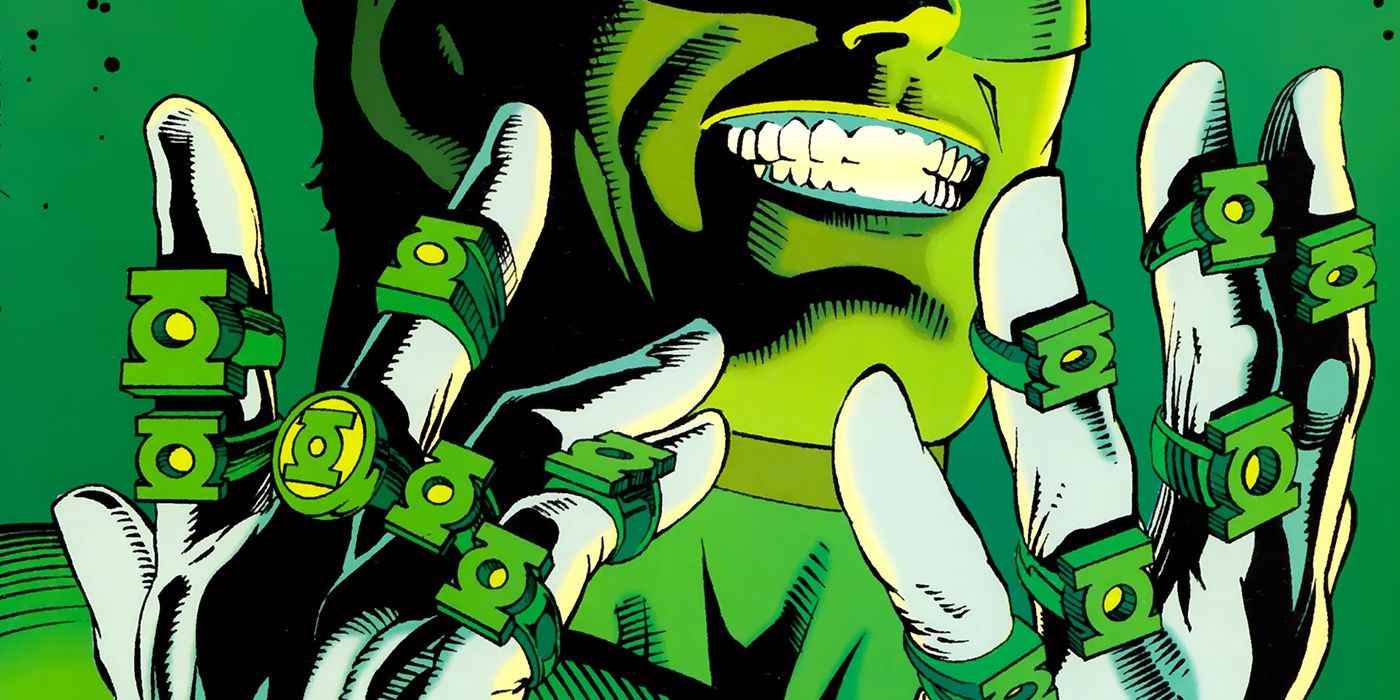Green Lantern is one of the most iconic heroes of the DC Universe. There have been several iterations of the character, but arguably the most popular is Hal Jordan, a test pilot who is enlisted into the Green Lantern Corps, an intergalactic police force. Each member of the Corps wields a power ring that grants the user flight and the ability to create solid light constructs, limited only by the ring bearer’s willpower and imagination.
After enduring something of a creative slump in the 1990’s, Green Lantern was reinvigorated in 2004 with the Green Lantern: Rebirth miniseries, written by current DC Films head honcho Geoff Johns. Rebirth was followed by Johns’ wildly successful Green Lantern ongoing series that routinely made Hal Jordan DC’s second best selling character, trailing only Batman. The success of the comics led to a renaissance of Green Lantern media, including cartoons, toys, and an underwhelming 2011 feature film starring future Deadpool actor Ryan Reynolds as Hal Jordan.
As the DCEU continues to expand, Hal Jordan and friends will get another shot at cinematic glory with Green Lantern Corps, currently scheduled for a 2020 release, and speculation is rampant over whether or not the emerald warrior will appear in November’s Justice League. While the world awaits the next chapter for Green Lantern, we’re taking a look at some of the lesser known facts of the character’s long and storied history.
These are the 15 Things You Didn’t Know About Green Lantern.
15. Daffy Duck Was Briefly In The Green Lantern Corps
The Green Lantern Corps is a universe-spanning organization, featuring a diverse roster of aliens that includes everything form orange fish men to sentient planets. But perhaps its most surprising member was none other than Daffy Duck.
In 2003, the Looney Tunes icon was starring in his own science fiction-flavored spinoff, Duck Dodgers, based on a classic Looney Tunes segment that was a riff on Buck Rogers. In one episode, Daffy endures a dry cleaning mix up and ends up with Hal Jordan’s Green Lantern ring. The episode that follows is not only a funny episode, but also a full-throated celebration of Green Lantern and its mythos, introducing the concept of the Corps and many of its most beloved characters with a surprising level of reverence.
14. Jack Black Almost Starred In A Comedic Green Lantern Film
While the 2011 Green Lantern film starring Ryan Reynolds as Hal Jordan is often derided as one of the worst modern superhero films, most people don’t realize how much worse it could have been.
In 2004, writer Robert Smigel (Triumph The Insult Comic Dog) was commissioned by Warner Bros. to write a comedic Green Lantern script. Smigel’s take on Green Lantern was essentially a lazy goof who was wholly unqualified to be a superhero. Smigel had one man in mind to take on the role: Jack Black.
Black is a talented performer, but it’s difficult to envision an actor less qualified to play Green Lantern. Luckily for all involved, Warner Bros. had a change of heart when news of Smigel’s silly concept broke online to universal scorn, and the studio shifted to a more serious take.
13. The 2011 Movie Almost Featured Original Green Lantern Alan Scott
One of the many reasons Martin Campbell’s 2011 Green Lantern film failed was the unending wave of rewrites its script endured. The film has four credited writers, though it’s long been common knowledge that many more voices had creative input, and that Campbell essentially lost control of the movie in post-production.
The original script, written by Greg Berlanti, Michael Green, and Mark Guggenheim, is radically different from the finished product. The main villain was Legion, not Parallax, and more attention was given to Hal’s formative youth.
The biggest change, however, was the addition of a huge part of Green Lantern lore. In the finished film, the secretive government official role is occupied by Amanda Waller (played by Angela Bassett in the character’s pre-Suicide Squad days).
In the original script, Golden Age Green Lantern Alan Scott was the mysterious figure manipulating events from a distance, and his ties to the Green Lantern Corps were heavily implied. This would have made for a massively different (and perhaps more satisfying) film.
12. Justin Timberlake Was In The Running To Play Hal Jordan
When the 2011 film was announced, there was wide speculation about who could potentially fill Hal Jordan’s emerald shoes. The reported short list of actors included two fairly obvious choices in Ryan Reynolds and Bradley Cooper (who is reportedly on Warner Bros.’ shortlist for the role again in 2017), and one head scratching wild card: Justin Timberlake.
Before Timberlake had made peace with simply being on the biggest pop stars of his generation, he was making an honest run at being a movie star. While he did strong work in The Social Network, his subsequent work in films like In Time and Runner Runner didn't live up to that promise.
The thought of Timberlake donning Hal Jordan’s green and black costume is jarring, and it’s probably best for all parties that he was passed over.
11. Hal Jordan Used To Be A Toy Salesman
In the late '60s and early '70s, Green Lantern was a bit directionless. The character was in a creative rut, and DC tried some strange things to rejuvenate him. The once-cocksure, Chuck Yeager-inspired pilot descended into constant self-doubt and sulking. He quit his iconic job as a test pilot and began aimlessly wandering America, where he took on menial jobs like an insurance claim adjuster and toy salesman.
Imagine Clark Kent giving up journalism to become a roadie for Whitesnake. That’s exactly how ridiculous the notion of “Hal Jordan, toy salesman” is. Luckily, the character would find some purpose again when he was teamed up with Green Arrow for the legendary “Hard Traveling Heroes” saga, which turned Hal’s angst into something important and productive - and, more importantly, got him to stop selling toys.
10. The Original Green Lantern’s Weakness Was Wood
It’s become an easy joke that you could defeat Green Lantern with a bottle of mustard. The character’s weakness to anything yellow is a well established punchline, and deservedly so. It was a silly remnant of the Silver Age that was miraculously redeemed when Geoff Johns revamped the character and his world in the '00s, creating the emotional spectrum and establishing yellow as the light of fear.
The Golden Age Green Lantern’s weakness would be a lot harder to legitimize. Alan Scott, who is not a member of the Green Lantern Corps and whose power originates from a different source, has virtually all of the same abilities as the later GLs, but his weakness wasn’t yellow… it was wood. That’s right, Alan Scott possessed an unimaginably powerful magic weapon that could conjure anything he could imagine… just as long as there wasn’t a tree in his way.
9. Kyle Rayner’s Run Was The Genesis Of The “Women In Refrigerators” Trope
Kyle Rayner’s tenure as Green Lantern got off to a decidedly polarizing start. Following the events of “Emerald Twilight,” Kyle was given the last Green Lantern ring, with no training or mentors to help him navigate this new responsibility. His only real ally at the outset was his girlfriend, Alex DeWitt. Alex helped Kyle to understand how to tap into his willpower and find the self-confidence to believe he was capable of being a hero.
And then she gets stuffed into a refrigerator. Z-list villain Major Force strangles Alex to death and leaves her crumpled body in the fridge for a horrified Kyle to find.
It was one of the most egregious instances of violently killing off a female love interest for the sake of sensationalism and adding to the hero’s pathos. Future DC writer Gail Simone coined the term “Women In Refrigerators” as a catch-all for the misogynistic trope, and it’s become a lightning rod among not only the comic book community, but in the broader world of fiction as well.
8. Hal Jordan Had A Sidekick With A Wildly Racist Nickname
Sometimes it’s important to understand that stories that have been ongoing for well over 50 years are going to contain remnants of eras where people weren’t as enlightened; where things we consider offensive today simply weren’t viewed in that context when they were created.
And sometimes things are just actually really racist. The latter is true with Hal Jordan’s Silver Age sidekick Tom Kalmaku, a young Inuit mechanic at Ferris Air. As late at the 90’s Tom’s nickname was “Pieface,” a racially charged insult.
The irony is that Tom has always been portrayed as an intelligent, fully fleshed-out character who Hal trusted and respected more than virtually anyone else in his life. Tom even played a crucial role in reviving the Green Lantern Corps after the events of “Emerald Twilight.” His success as a character makes the slur of his name all the more frustrating.
7. The Tale Of Rot Lop Fan
Watchmen writer Alan Moore didn’t spend a lot of time in the world of Green Lantern, but one of his few stories stands out as one of the most unique in the history of the Corps.
Veteran GL Katma Tui is ordered to a recruit a new Lantern in the Obsidian Deeps, a region of space that contains no light. That recruit is Rot Lop Fan, a member of a completely blind species who have no concept of light or color.
Katma Tui is eventually able to teach him how to use the ring through other means. Rot Lop Fan is able to conjure a bell with the ring, and comes to understand the ring’s power through sound, rather than sight. As he has no concept of the color green or lanterns, Rot Lop Fan refers to himself as a member of The F-Sharp Bell Corps. Probably not the GL you’d want next to you in a fight against Sinestro, but it’s a very sweet story.
6. Hal Jordan Was Based On Paul Newman
Paul Newman was one of the most iconic movie stars of the 20th century, a handsome leading man known for his performances in classic films like Butch Cassidy and the Sundance Kid and Cool Hand Luke. Had he come up in a different era, it’s easy to imagine Newman starring in a superhero film.
Artist Gil Kane (who had previously created the earlier Green Lantern, Alan Scott) based Hal Jordan’s looks on Newman, who was at one time the artist’s neighbor. The matinee star’s good looks and easy charm were a natural fit for the cocky test pilot who moonlights as a superhero.
Newman wasn’t the only film star Kane used for inspiration: Hal’s archenemy, the villainous former Green Lantern Sinestro, was reportedly based on British actor David Niven. While Newman’s physical influence on Hal Jordan has faded somewhat over the years, Sinestro’s resemblance to Niven is still unmistakable.
5. The Green Lantern Corps Once Fought Ridley Scott’s Aliens
Comic books have never been short on bizarre inter-company crossovers, whether it be the X-Men encountering the crew of the starship Enterprise or Batman hanging out with the Teenage Mutant Ninja Turtles. In the grand scheme of things, Green Lantern taking on the xenomorphs from Ridley Scott’s Alien franchise actually doesn’t seem that crazy.
Told through a miniseries in the year 2000, Green Lantern Versus Aliens spanned two different eras of Green Lantern, starting with a Hal Jordan story set in the past, and then a modern day Kyle Rayner tale that dealt with the fallout of that earlier adventure. Fittingly, it was a decidedly graphic story, resulting in the (non-canonical) deaths of several Green Lantern characters, most notably Salaak.
These sort of crossovers are generally pretty perfunctory, but Green Lantern Versus Aliens actually delivered a solid, scary story.
4. Hal Jordan Served In The Korean War
A lot of superheroes have been around so long that they exist on something of a sliding timeline. Characters whose origins rely on events that occurred during World War II, for example, generally require updates so that they can credibly still exist in their iconic iteration.
Created in 1959, Hal Jordan was a test pilot who initially was a veteran of the Korean War. That aspect of the character was quietly discarded over the years, but it was utilized to dazzling effect in Darwyn Cooke’s brilliant The New Frontier, a graphic novel that reimagined the Justice League’s formation at the dawn of the Space Race. Hal was the book’s central character, and his harrowing experiences in the Korean War deeply shaped the cocky, emotionally distant man he became.
3. John Stewart Was DC’s First Black Superhero
As late as the 1970s, superhero comic books were still shockingly white. There were a handful of minority supporting characters, but really nothing in the way of lead characters or fully fleshed-out heroes. DC’s first major step toward diversity was the creation of John Stewart in 1971. The young, fiery architect would initially serve as Hal’s substitute Green Lantern, and would eventually headline the series for several years in the 80s.
While the character has had a bit of an uneven run in the comics, John Stewart became the one and only Green Lantern for an entire generation due to his inclusion in the 2001 Justice League cartoon. That version of the character is easily the most iconic - given life by Phil LaMarr’s tremendous voice acting performance, and the character’s star crossed romance with fellow league member Hawkgirl.
Reports have indicated the upcoming Green Lantern Corps film will feature both Hal Jordan and John Stewart, so the character’s popularity is only going to rise.
2. Guy Gardner Is a Jerk Because Of Brain Damage
One of the most obnoxious, arrogant heroes in all of comics, Guy Gardner wasn’t always that way. When a dying Abin Sur crash landed on Earth, his ring identified two humans who were worthy of joining the Green Lantern Corps: Hal Jordan and Guy Gardner.
The only reason Hal was selected over Guy was that he was closer to where Abin Sur had landed. Hal would eventually befriend Guy, and Guy was designated as Hal’s alternate. At this point, Guy was a perfectly reasonable, likable character, and it was easy to see why the ring chose him.
Then things took a turn for Guy. After enduring several serious injuries, including a head injury that left him in a coma, Guy returned with a drastically different personality. He was now a hot headed, self-obsessed jerk, who took as much glee in tormenting Hal as he did in fighting bad guys. It’s bizarre to think the most iconic version of a character has its origins in brain trauma, but it’s sort of fitting for a character as noxious as Guy Gardner.
1. Emerald Twilight Was Almost Radically Different
“Emerald Twilight” is easily the most controversial story in the history of Green Lantern. Following the destruction of his hometown, Coast City, Hal Jordan loses his mind, leaving a trail of death and destruction behind him on a suicide run toward Oa, home of the Guardians of the Universe. Hal attempts to harness the power of the Central Power Battery to grant himself reality bending power. He maims and kills his friends and allies, snaps Sinestro’s neck, and kills all but one of the Guardians, becoming the all-powerful villain Parallax.
Despite the retcon of Hal being possessed by a fear demon a decade later in Green Lantern: Rebirth, “Emerald Twilight” still stands as the dark nadir of the character’s history. It didn’t have to be this way: when DC decided they were going to overhaul the book and introduce a new lead, series writer Gerard Jones pitched a story where Hal would rebel against the increasingly amoral Guardians, resulting in the dissolution of the Corps and Hal’s departure from the title role. DC did not feel this was an extreme enough revamp, and decided to throw 35 years of character history into a grease fire instead.
Green Lantern would eventually right itself again, but for many fans, “Emerald Twilight” left a scar that will never fully heal.
---
Do you have any Green Lantern trivia to share? Let us know in the comments!

